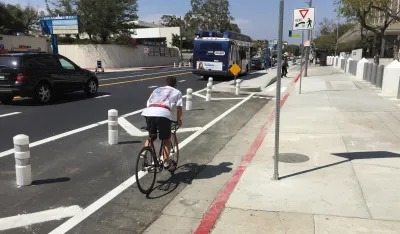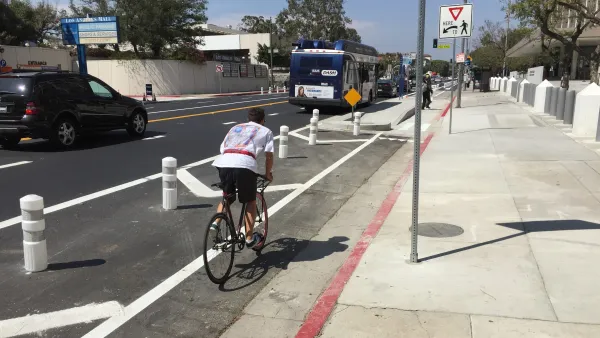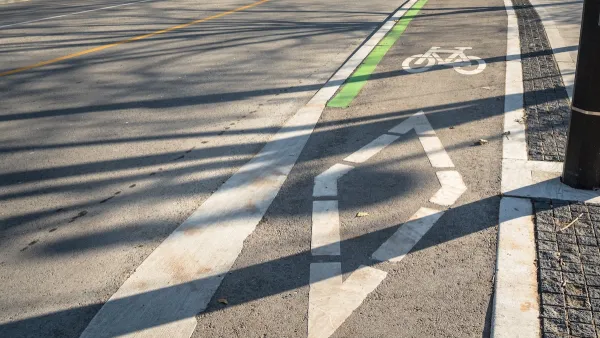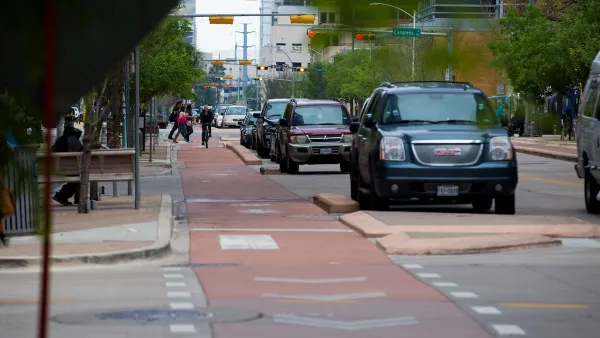A longitudinal study shows that bike facilities don't precede neighborhood change or displacement of residents.

According to research analyzing data from 29 American cities from the University of New Mexico and the University of Colorado, "[t]he installation of new bike infrastructure in neighborhoods does not lead to displacement of people of color, and low-income areas received more 'hard' facilities like buffered or protected bike lanes than high income areas."
Lisa Caballero writes for Bike Portland that "this study was unique in that it distinguished between types of facilities, from sharrows to protected lanes. It found differences in who got what, with lower income areas more likely to receive protected bike lanes." The authors' "interpretation of the results was that increases in the percentage of white people in a neighborhood preceeded an increase in bike facilities more so than the reverse, bike facilities preceeding a change in demographics."
According to Kea Wilson of Streetsblog:
[S]tudy co-author Nick Ferenchak was careful to note that the finding did not mean that U.S. transportation planners are necessarily doing a great job at using cycling as a tool for broader mobility justice. In particular, the data revealed that transportation leaders aren’t delivering equal access to new bicycle infrastructure for people of color — and in the context of a quantitative analysis, they couldn’t determine whether transportation leaders were delivering equitable access to the transportation infrastructure for which those communities are actually asking, if leaders are even asking at all.
"Low-income people, meanwhile, are getting better access to meaningful bicycle infrastructure than some may expect — though maybe not as fast as those communities actually need," considering that "39 percent of bike commuting is done by the lowest-income quartile in the U.S." Ferenchak concludes that, while "gentrification is a complex set of forces that goes beyond displacement," we now know "we can go ahead and build the bike lanes. We know we’re not going to be displacing people just by doing that."
FULL STORY: Study suggests bike lanes do not lead to displacement, gentrification

National Parks Layoffs Will Cause Communities to Lose Billions
Thousands of essential park workers were laid off this week, just before the busy spring break season.

Retro-silient?: America’s First “Eco-burb,” The Woodlands Turns 50
A master-planned community north of Houston offers lessons on green infrastructure and resilient design, but falls short of its founder’s lofty affordability and walkability goals.

Delivering for America Plan Will Downgrade Mail Service in at Least 49.5 Percent of Zip Codes
Republican and Democrat lawmakers criticize the plan for its disproportionate negative impact on rural communities.

Test News Post 1
This is a summary

Test News Headline 46
Test for the image on the front page.

Balancing Bombs and Butterflies: How the National Guard Protects a Rare Species
The National Guard at Fort Indiantown Gap uses GIS technology and land management strategies to balance military training with conservation efforts, ensuring the survival of the rare eastern regal fritillary butterfly.
Urban Design for Planners 1: Software Tools
This six-course series explores essential urban design concepts using open source software and equips planners with the tools they need to participate fully in the urban design process.
Planning for Universal Design
Learn the tools for implementing Universal Design in planning regulations.
EMC Planning Group, Inc.
Planetizen
Planetizen
Mpact (formerly Rail~Volution)
Great Falls Development Authority, Inc.
HUDs Office of Policy Development and Research
NYU Wagner Graduate School of Public Service





























